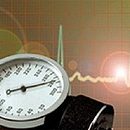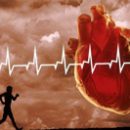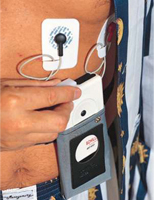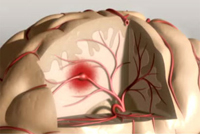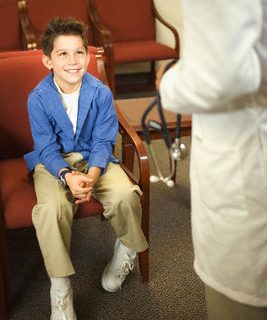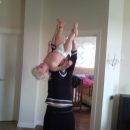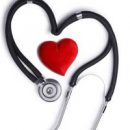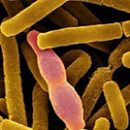Infectious endocarditis in childhood The cup is secondary in nature and, as a rule, develops against the background of congenital heart defects. Alsamize a group of repeated endocardits arising from previously cured when the disease develops after transferring operations or manipulations.
Content
Concept of infectious endocardite in childhood
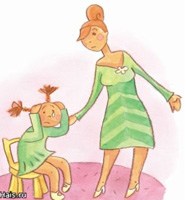 Infectious endocarditis in children is more commonly secondary, and most of the diseases are developing against the background of congenital heart defects - with a tetrade Fallo, a defect of the interventricular partition, aortic stenosis. Primary endocarditis occurs rarely.
Infectious endocarditis in children is more commonly secondary, and most of the diseases are developing against the background of congenital heart defects - with a tetrade Fallo, a defect of the interventricular partition, aortic stenosis. Primary endocarditis occurs rarely.
In children of the first 2 years of life, intrauterine, congenital and acquired endocardits can develop. Congenital endocardits in most cases occur in the presence of viral and bacterial infections from the mother. Not a little important role is played by acquired endocardits in children of infant with intact heart valves. During outbreaks of respiratory viral infections, there are cases of thromboendocardites in children of the first months of life. In a separate group of infectious endocarditis, children include the so-called endocarditis of the prosthetized valve flowing along the type of acute sepsis. Endocarditis can be repeated and developed in previously cured patients. The conditions for the occurrence of repeated endocarditis are parenteral administration of drugs, surgical manipulations, in the presence of foci of infection.
The main manifestations of the disease
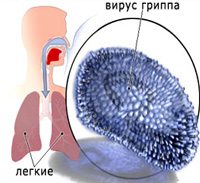 The main manifestations of infectious endocarditis in children are largely determined by the variations of the disease. Current options are reduced to acute, abortive and chronic. Subighteous endocarditis is characterized by slow, gradual start without clear symptoms. The same group refers endocarditis in the outcome of an acute disease in its duration of more than 6 weeks. As in adults, acute endocarditis happens, as a rule, primary, and subacute usually complicates congenital heart defects.
The main manifestations of infectious endocarditis in children are largely determined by the variations of the disease. Current options are reduced to acute, abortive and chronic. Subighteous endocarditis is characterized by slow, gradual start without clear symptoms. The same group refers endocarditis in the outcome of an acute disease in its duration of more than 6 weeks. As in adults, acute endocarditis happens, as a rule, primary, and subacute usually complicates congenital heart defects.
The characteristic manifestations of the disease are the constant increase in body temperature, octvinations, bouts of abundant sweating when temperature drops. Incixing manifests itself pale, pale gray or earthy skin color, often in combination with a jaundice associated with the development of toxico-allergic (especially with long-term use of large doses of antibiotics) or septic hepatitis. On the skin can be found different rashes located in the region of the clavicle, back, conjunctivations, soft and solid sky. In all cases of septic endocarditis in children, the spleen increases. Infectious endocarditis can be accompanied by pneumonia, short-term loss of consciousness, abdominal or back pain due to the development of thromboembolism.
Symptoms of heart lesions are important, sometimes the predominant part of the manifestations of septic endocarditis. Moderate pain in the heart area are possible, but sometimes pain can be intensive. Most of the symptoms of the disease pass after taking antibiotics.
Septic endocarditis activity in children
The activity of the septic process in children is accepted for three degrees. High activity (III degree) is characterized by increasing body temperature, chills, abundant sweating, sharp increase in SE. With moderate activity (II degree), all listed features are less pronounced, and with minimal activity (I degree), the body temperature closer to normal, the child's well-being is not much changed, but individual clinical manifestations and laboratory data indicate the current disease.
Treatment of the disease
Treatment of infectious endocarditis in children is based on the use of antibiotics. Antibiotics (preferably bactericidal) are prescribed in high doses. Penicillins, oxacillins, ampicillins, carbenicillins, cephalosporins and aminoglycosides are used in the treatment. Depending on the type of pathogen and the effectiveness of therapy, various combinations of antibiotics are used. In case of acutely arising, the insufficiency of blood circulation is shown bed regime, restriction of liquid, salt, appointment of diuretics.
With accompanying myocarditis, jade, polyarthritis for treatment is added non-steroidal anti-inflammatory drugs, or (according to life indications) glucocorticoids in a dose not exceeding 0.5 mg per 1 kg of body weight per day. In cases of staphylococcal endocarditis, antistaphococcal plasma transfuses, staphyococcal anatoxine, antifagin, outovaccines are shown. Under anemia, the erythrocyte mass is transfusing, while in children with congenital defects, hemoglobin should be maintained at a higher level of 150-160 g / l).

